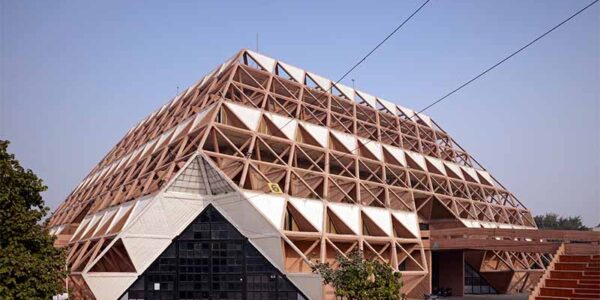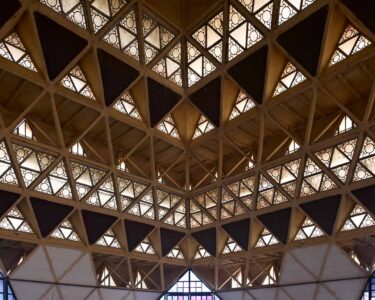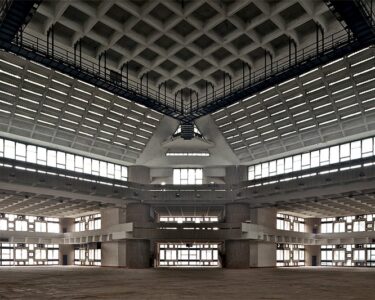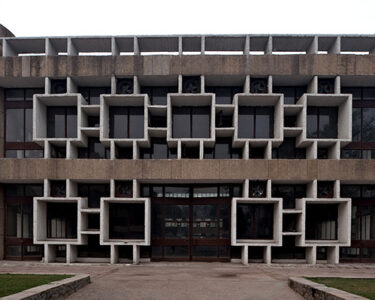Hall of Nations and Halls of Industries
1971-72
Pragati Maidan, New Delhi
Designed as space frame in reinforced concrete, the first of its kind in India, and perhaps in the world, the Hall of Nations provides an uninterrupted exhibition area of approximately 6700sqm in a 82m x 82m x 27m high truncated pyramid supported on eight points. Each of the four “Halls of Industries” is similar in design and is 44m x 44m x 16m high. Free standing coffered mezzanine floors cantilevering out of cylinderical shafts provide additional exhibition area in each hall.
A special 9 member joint was evolved for precast construction but the builder preferred in-situ construction. The joint was modified to suit the adopted technique. The Hall of Nations is supported on pile foundations tied together with post-tensioned plinth beams stressed in stages. The Halls of Industries rest on spread footings, tied together with high tensile steel bars. The entire complex was analysed, designed and built in a period of fifteen months.
Architect: Raj Rewal
Hindustan Lever Pavilion
1961
New Delhi
Architect : Charles Correa
M Pavilion
1971-72
Pragati Maidan, New Delhi
18m span girders on box columns and waffle slab provide additional exhibition area to an existing building.
Architect: Kuldip Singh
Pavilion-Delhi Cloth Mills
1972
Pragati Maidan, New Delhi
A truncated cone in folded plate steel with a base diameter of 43m and height of 28m. Three compression rings interconnecting the folds were used to erect the structure with the cantilever technique of construction.
Architect: Jasbir Sawhney
Hall of States
1981-82
Pragati Maidan, New Delhi
Built for the Trade Fair Authority of India at Pragati Maidan, Delhi, in 1982, this hall was used as the venue for boxing and table tennis events of the 9th Asian Games.
The complex was planned, designed and constructed within a period of 18 months.
It constitutes a central hall having a clear span of 44m and a height of 22m supported on 8 hollow circular shaft like columns of 3.4m diameter placed at the vertices of an unequal but symmetrical octagon. From the sides of the octagon emanates the square exhibition halls of approximately 22m x 25m. The complex has a covered area of 9450 sqm.
The structure is cast-in-situ RCC and founded on 408 driven cast-in-situ concrete piles of 50cm diameter. Approximately 4380 cubic of structural concrete of various grades and 750m of reinforcing steel have been used in the construction.
Architect: Raj Rewal
Ford Pavilion, Pragati Maidan
New Delhi











